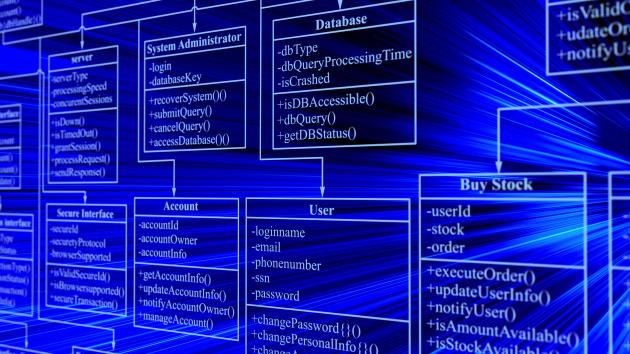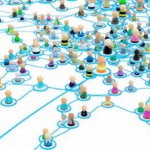Lately, I have become convinced that storytelling is the most important activity in our lives. The field of social psychology recognises this too, and researches how and why we tell ourselves stories, we tell others stories about ourselves, and we make up stories to make sense of the world around us.
Even, meditation guru Deepak Chopra acknowledged it too, only this week when he said during the latest Oprah and Deepak 21-day meditation experience:
We shape all our info from senses to create meaning from life. We are creators, shaping the eternal now.
So, my mind boggled when I in read Vincent Miller’s Understanding Digital Culture that the database has become an alternative to narrative.
This is a theory which is widely referenced and quoted in digital culture and new media literature and was first proposed by Lev Manovich, professor in cultural analytics.
There is a distinction between storytelling and narrative, which changes depending on who you are referencing, but I like Robert Mills’s explanation (from The Media Student’s Book). He says:
- Narrative is a sequence of events organised into a story with a particular structure.
- Story is all of the events in a narrative presented to an audience, and those which might be inferred.
However, for me a computer scientist, storytelling and narrative are both very different from the database, which developed as organisations attempted to make use of the information held on computers. Businesses wanted to reduce redundancy and inconsistency and find a way to get all the information they had in one place, so they could manage it more easily.
Theoretically, a database must be organised so that it can serve the data requirements of different applications. If designed robustly it finds natural relationships between those data items which it holds, and can be added to, and updated without the need to redesign the whole database, so that we can retrieve and filter information in many ways.
In reality, we all know of companies who have many databases which get updated manually and then swap data overnight so things are never quite synchronised nor consistent, and there is a lot of redundancy.
In digital culture the term database can mean any collection of data, most often new media objects, which have been tagged and are loosely linked together, and can be searched, viewed, deleted, and explored (or navigated).
Even so, narrative creates order and the database does not. The database represents the world as an unordered list of items which causes the linear structure of a narrative – beginning-middle-end – to disappear leaving us with the possibility of multiple interpretations and multiple stories.
It is this perceived flexibility which has led to different explorations of the database as an alternative to narrative in cinema and journalism:
Database cinema explores multiple viewpoints and more viewer interaction without following a linear chronological storytelling approach. Interestingly enough, cinema has traditionally always chosen from multiple viewpoints and data in order to create one narrative when editing the final cut.
Database narrative offers an alternative to the inverted pyramid taught in journalism schools. Maps, data, images, are all tagged by theme and type of content and then presented to the user without a journalist’s narrative arc of the story. It is the user’s interaction with the content which determines the story that emerges. And interestingly too, in the above example, students used Apple’s user interface design guidelines to think about how users would interact with the data.
Manovich said that creating a work in new media can be understood as the construction of an interface to a database, which gives plenty of options. That is to say, the database could look like a database or a narrative. A database can support narrative, but by itself a database couldn’t generate a narrative. (It needs someone to interpret.) And, he asks given the flexibility of the database why does narrative still exist in new media?
One reason could be, according to social and cultural psychologist David Miall, that hypertext is disruptive and does not give the liberating user participatory behaviour cultural analysts imagined it could. Miall says that the experience of immersion and absorption is fundamental to reading (and the story) doesn’t happen when you are given links everywhere.
We learn as children to construct meaning (or stories) from our environment, but now we must also learn to do so meaning from our digital environments. This won’t be easy as we are overwhelmed with lots of information and very little narrative.
And, what is the best way to create meaning? Manovich’s ideas only work with a small dataset, which is fine if users want to explore and create. But, humans hanker after order and understanding. We don’t want endless reorganising data, as we have limitations to what we can process, and we don’t want to have to figure it all out ourselves.
Already, we collect data on everything in business and our infrastructures, and via the Internet of Things we will eventually generate endless streams of data from all our appliances in our homes and cars and our wearables.
Businesses realised at least a decade ago that the only way to manage all the data they generate was to buy into big data, which they did. Big data costs are projected to cross the $100 billion mark within the next three years. And, now businesses are drowning in big data with very little gain.
Narrative Scientist, Kristian Hammond says that the only way to get value from big data is to find – you guessed it – the narratives and insights needed to support decision making. Currently, this is done by people with strong analytic training, who look at all the data and then transform it into reports that everyone else can read. But it is not scalable. If you have a business with 1 million client portfolios, the only way to generate that many reports is to employ artificial intelligence systems to analyse clusters and recognise patterns which can be transformed into meaning. That is to say, changed into a narrative that can be read and understood by people.
Narrative scientist, Randy Olson says we need to do this in academia too. It is not enough to create journal papers and reports, we need to create compelling stories of science in order to educate and communicate people with the progress made.
Stories matter, they educate and change us. It may be true that we are learning how to engage differently with our digital environments. It may also be true that databases big and small can stimulate us to look at the facts from multiple viewpoints and create our own stories. However, the database is no substitute or alternative for a well crafted narrative, whether it was written by a human or a computer.
The story is here to stay.







10 comments